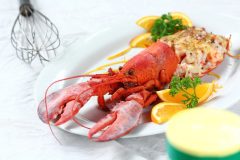Central America’s Hidden Gem

The waitress has a quizzical look on her face. Could we repeat the question, please? Not sure whether she speaks Spanish or Creole (and knowing neither ourselves) we try a tentative: "Water, please?" She shakes her head and replies in lugubrious Caribbean vowels. "We don’t have water. We have rum."
These are the Corn Islands - Big Corn and Little Corn sit in the Caribbean Sea, 70km off the country’s eastern coast. This is my first experience of a Caribbean island, and in some regards it already feels a typical one - seafood so fresh it almost wriggles, white sand beaches fringed with palms and, of course, clear azure water. My friend Alex and I have spent our three days on Big Corn alternately sunbathing, snorkelling coral reefs and knocking back margaritas. So far, so Caribbean. But the Corn Islands differ in one key regard: they are still barely known. They are what Antigua, Barbados and Jamaica were 30 years ago.
So how have the Corn Islands managed to remain such a secret? You could ask the same about Nicaragua’s rainforests, its volcanoes, its historic colonial towns. And the answer is always the same: its history. Nicaragua’s place in the hierarchy of Central American travel destinations remains low because it sounds a lot riskier than it is. Shades of Nicaragua’s Contra War of the 1980s cloud its public perception. "A lot of people still think there’s guerrilla fighting going on here," says Juan Carlos, our guide. "It ended 20 years ago."
The fact that most flights land in Managua, one of the least alluring capitals on the entire American continent, is a disheartening one. But if you drive 40 minutes to the southeast, you eventually shake off its trailing suburbs and reach Granada, a far more attractive prospect. An old Spanish trading port, it sits on the shore of Lake Nicaragua, Latin America’s second largest inland water, after Titicaca. The city’s 18th-century colonial buildings now house several hotels and some decent restaurants, and the centre is small and easily navigable. From street level, it’s the ice-cream colours of the thick adobe walls that catch the eye; from the bell tower of La Merced, it’s the lattice of courtyards and interior gardens, reminding you of Tuscany.
Thanks, no doubt, to the country’s leftwing leanings, there is a pervasive sense that Nicaragua wants to follow Costa Rica in embracing conservation and responsible tourism. Access to national parks is carefully controlled; hotels are being designed to blend into their environments; and workers’ collectives are coming together to offer homestays and to promote sustainable living. And nowhere is this attitude better showcased than at Morgan’s Rock, in the south of the country near San Juan del Sur.
Nicaragua’s most exclusive destination is also its most sustainable. A "luxury eco-lodge" set on a nature reserve of 1,800 hectares, Morgan’s Rock has been created to preserve wildlife, invest in the local community, and offer a holiday stay like no other. And that’s why I find myself standing in a barn with my arm outstretched, while a large and obliging chicken drops a hot, sticky egg into my palm.
Felix, our guide, suggests we go snorkeling, and we head for some nearby rocks, where the clownfish and jellyfish glow like neon. Felix points to a fissure near the seabed and I follow him down, watching as his hand darts inside and reappears cradling a bemused lobster. It’s all very ‘Finding Nemo’. Well, up to the moment when Felix whips out a skewer and pierces its thorax.
The lobster ceviche is delicious. Still, there’s plenty of wildlife left: howler monkeys, exotic birds and crabs so multicoloured they look like they’ve been attacked by a five-year-old with felt-tips. Everything about the place has been designed to maximise your awareness of the natural habitat and to have minimum impact on the environment. The secluded bay isn’t just a private beach: it’s somewhere for the sea turtles to lay eggs at midnight. Vast tracts of the land are being systematically reforested; and the staff are all locals on trainee programmes, developing their hospitality and language skills.
Its eco-credentials are matched only by its pure indulgence. Every stay is full board, and the meals and cocktails, taken by the swimming pool, are exquisite. The bungalows themselves - there are only 15 of them - are little pieces of dark-wood heaven. I love the dramatic suspension bridge that spans the treetops between the communal areas and the bungalows.
Luxury with a conscience? I’m sold. With destinations such as these, Nicaragua won’t stay quiet for long.
Tailor-made holidays
Flexible, custom-made holidays to Latin America created to match your exact requirements: our tailor-made itineraries are as unique as the clients for whom they are designed.
Design my tripPapagaio
Your edit for Latin American inspiration
Our exciting range of articles on Latin America explore everything from iconic destinations and lesser-known cultural gems to delicious traditional recipes. You’ll also find exclusive travel tips, first-hand client reviews and the chance to get your personal questions answered by our travel experts.
View Extraordinary Inspiration






































